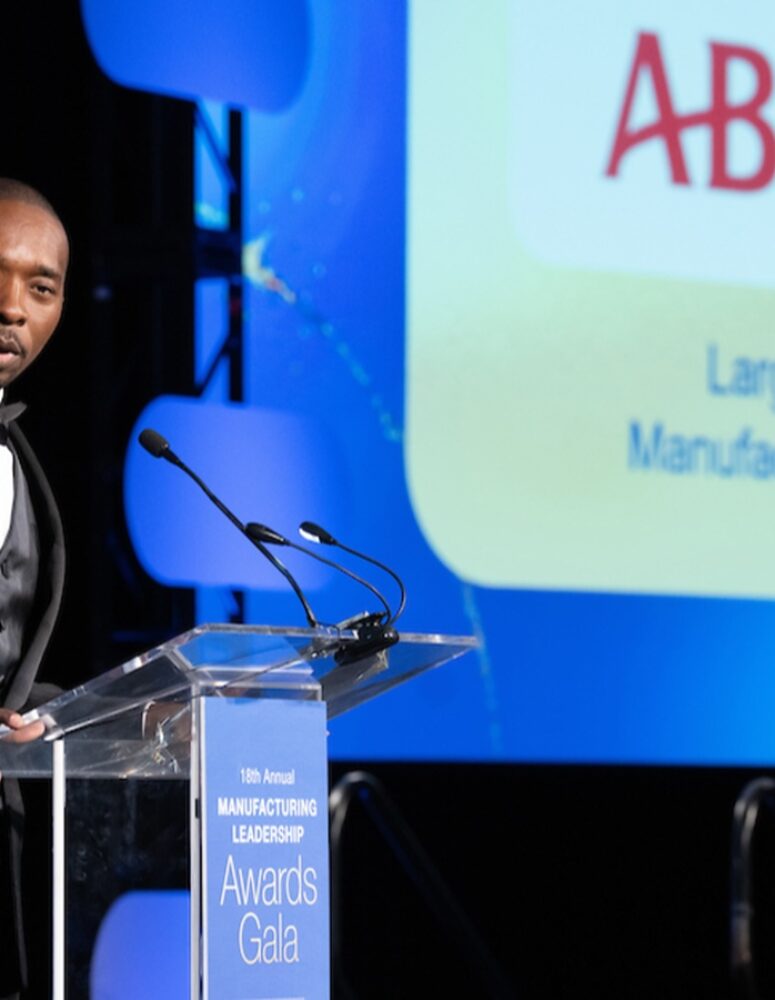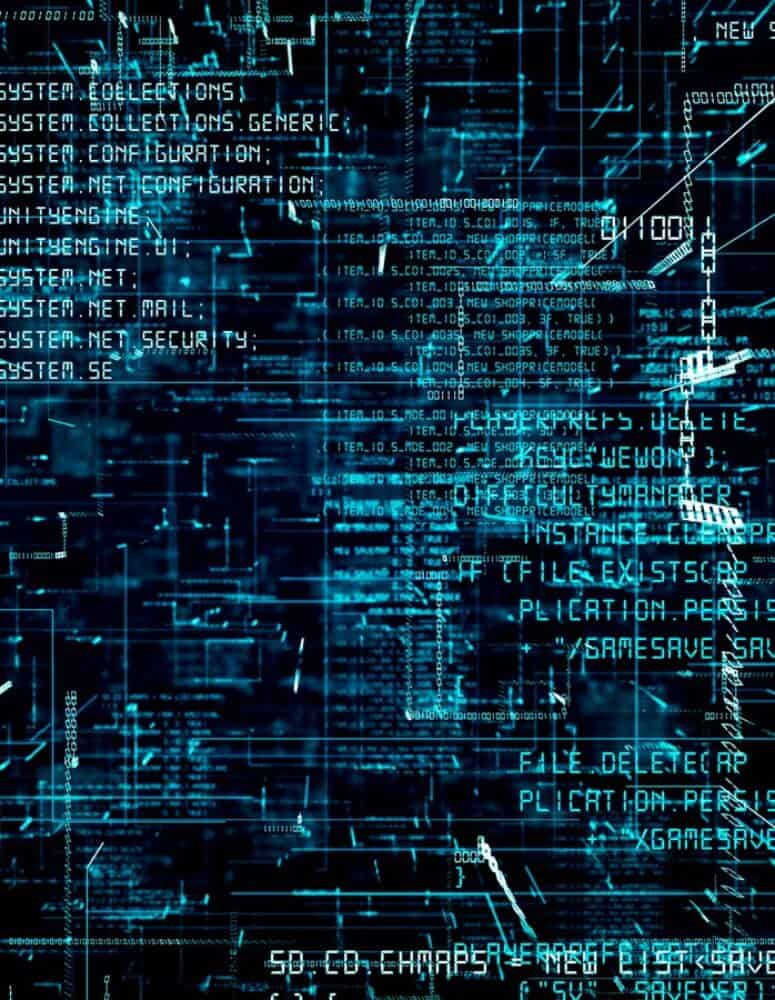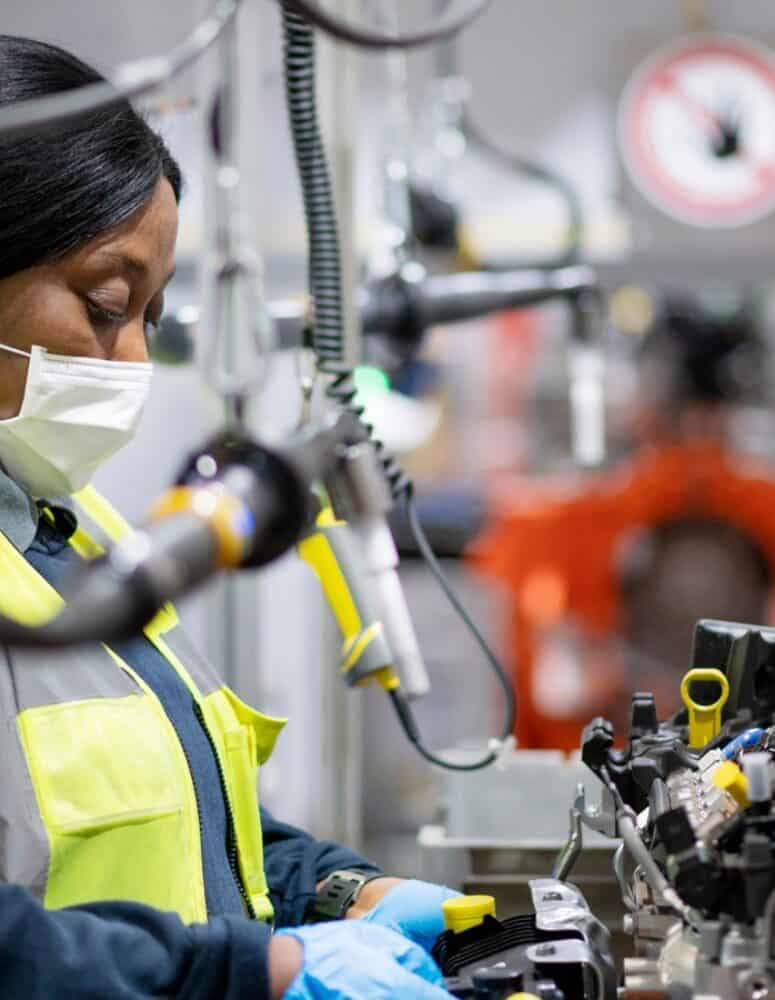AB InBev Uses Smart Manufacturing for Award-Winning Results
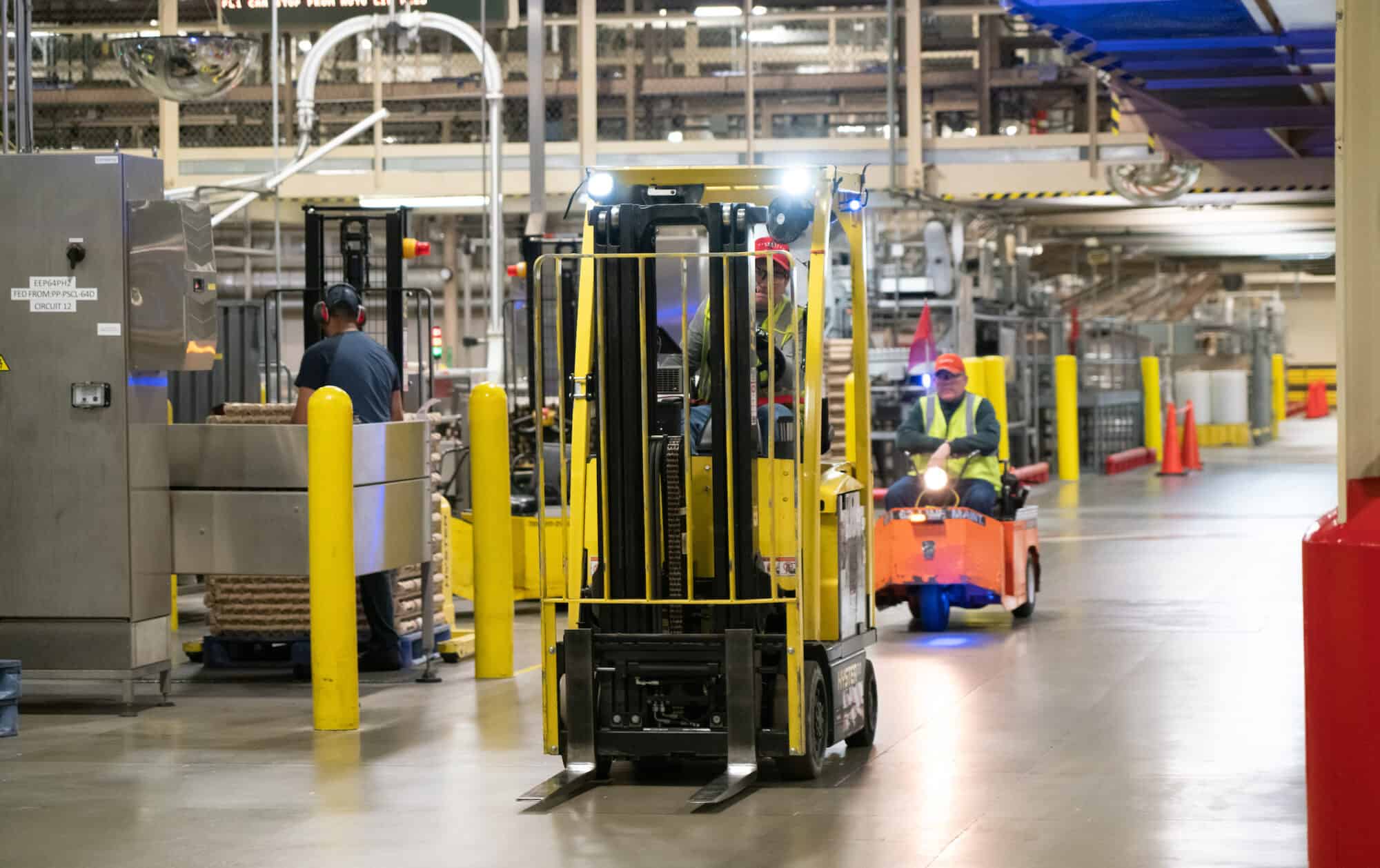
What does it take to be a digital transformation champion? Anheuser-Busch InBev can tell you.
The world’s largest brewer won four Manufacturing Leadership Awards in 2022, including the highly coveted Manufacturer of the Year. (The honors are given annually by the Manufacturing Leadership Council, the NAM’s digital transformation arm.) The MLC chatted with AB InBev Global Vice President Marcelo Ribeiro recently to get his insights on the processes, technologies and strategies driving the company’s success.
Business transformation drivers: “We have a dream at ABI, which is ‘to create a future with more cheers,’” said Ribeiro. “[That means] a clear strategy to lead and grow, to digitize and monetize our ecosystem and to optimize our business.” Here are a few ways AB InBev is pursuing that dream:
- Developing and delivering products that give consumers what they want, when they want it
- Making sure the supply chain can adapt quickly to consumer needs
- Increasing capacity without compromising safety, quality or sustainability
Rising to challenges: “The future is becoming less predictable,” Ribeiro said. “We need to prepare for that, so we have to build a more resilient, flexible supply chain.” Additional opportunities include:
- Moving from transactional relationships with vendors and suppliers to partnerships
- Looking beyond operations and across the entire supply chain to meet sustainability goals
- Creating a collaborative manufacturing ecosystem that fosters the sharing of ideas
Meeting the digital future: Ribeiro says that ABI’s digital strategy has three key aspects:
- Making data more accessible and available to frontline workers
- Creating a template for digital technology that can be easily tailored to the unique needs of each business
- Using advanced analytics to contextualize data and discover where it can best be applied to aid decision making
Leaders required: Ribeiro noted that leadership is essential for making this vision a reality.
- “It is critical to empower the front line,” he said. “Leaders should be focused on providing the resources to allow people to do the work and achieve excellence themselves. In the end, people are key for any business transformation.”
Find additional insights into AB InBev’s digital transformation in DIALOGUE: AB InBev’s Award-Winning Dream, or make plans to attend Rethink, where Ribeiro will present a keynote address on “Building Your Enterprise into a Digital Transformation Champion.”
AI in Manufacturing: 11 Focus Areas to Consider
Manufacturing Leadership Journal content and MLC resources are exclusively available to MLC members. Please sign up for an account or log in to view this content.
E-Cycling Helps Manufacturers Generate Business Value
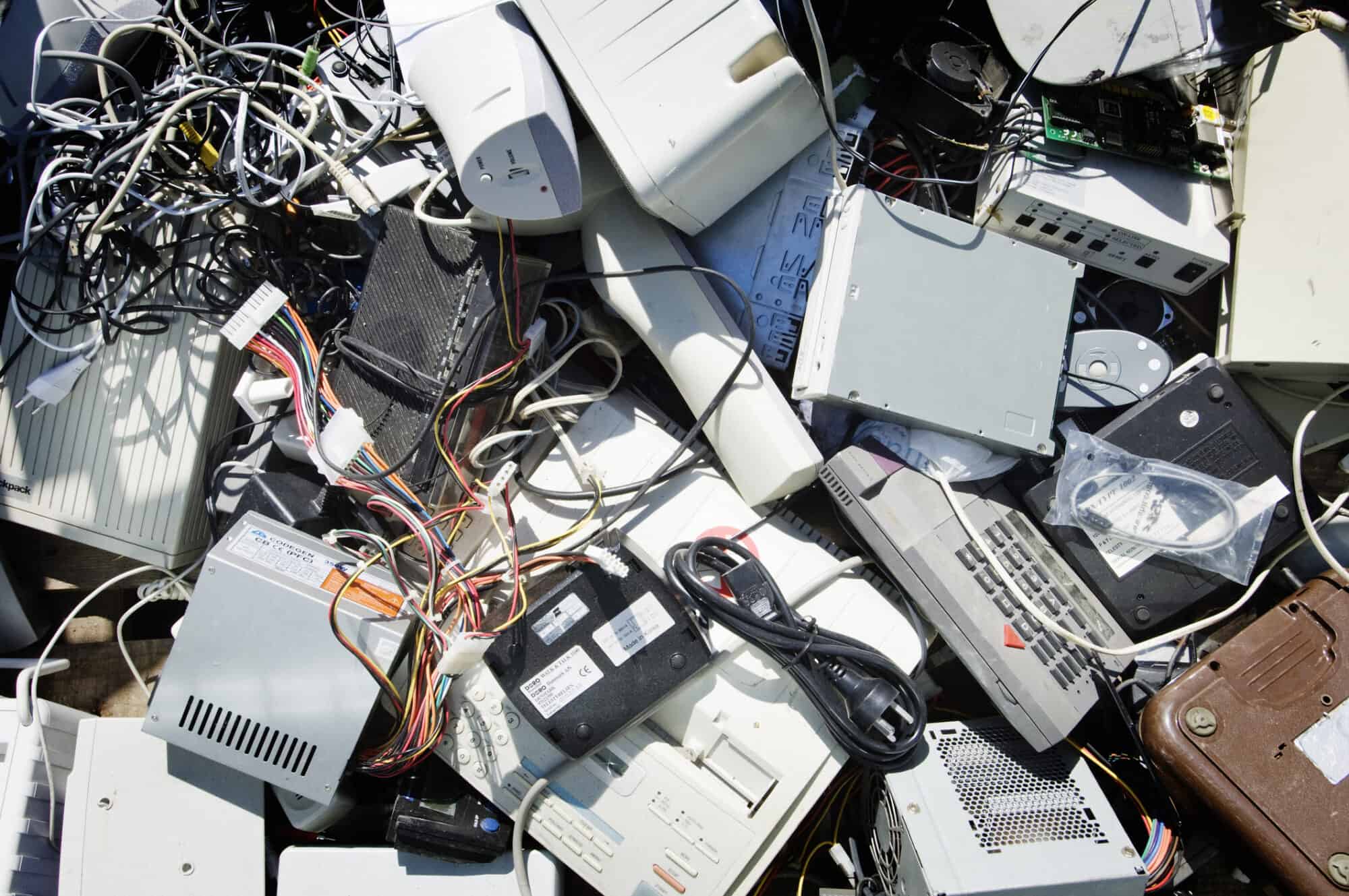
Electronic waste is a big problem.
In 2019, the world generated a record 53.6 million metric tons of discarded electronic and electrical devices, according to a Global E-waste Monitor report. That’s an increase of 21% in just five years. But there’s more: The figure is expected to double by 2050, hitting 120 million tons annually.
The good news is that manufacturers can be an active part of the solution. Though their bread and butter has typically been bringing new products to market, manufacturers are now also developing end-of-life processes for goods to mitigate environmental impact, according to Bright Machines Vice President of Industrial Solutions Adam Montoya, writing in the Manufacturing Leadership Council’s Manufacturing Leadership Journal. (The MLC is the digital transformation division of the NAM).
The challenge: complex components. Disassembling a product is not nearly as straightforward as assembling it, according to Montoya. Take a server, for example. A company might know what’s inside it based on its original configuration, but memory or processor upgrades could have changed over the course of its life.
- When a lot of change has taken place, the dismantling process is unique to each server, making it complex and difficult to automate.
The solution: intelligent disassembly. Improving the end-of-life process for electronics requires intelligent disassembly, a combination of smart technology and a different way of thinking, says Montoya. Here’s how it works:
- Automation technology that uses AI and advanced vision systems interprets the contents of a particular component and compares it against the original blueprint.
- Next, the system assesses the presence and location of components within the unit.
- It then sorts, separates and removes components so they can be reclaimed or recycled.
The bottom line: Manufacturers stand to realize many benefits from intelligent disassembly. Components with sensitive data can have machine-driven proof of destruction. Systems with usable parts can be repurposed rapidly.
- Ultimately, it’s an important way for manufacturers to collectively reduce carbon footprints and electronic waste while delivering business value, says Montoya.
For more on this topic, read Rethinking End-of-Life Technology Value in the Manufacturing Leadership Journal. And to learn more about how manufacturing leaders are undertaking digital transformations, join the MLC at its Rethink conference in Marco Island, Florida, on June 26–28.
New Members of the MLC
Introducing the latest new members to the Manufacturing Leadership Council.
Manufacturing Leadership Journal content and MLC resources are exclusively available to MLC members. Please sign up for an account or log in to view this content.
Davos 2023: Takeaways for Manufacturing
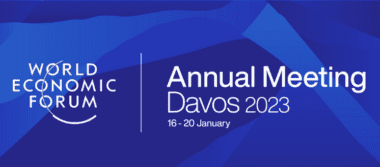
A personal perspective by Augury CEO Saar Yoskovitz on his most important takeaways for manufacturers from the World Economic Forum’s annual meeting in Davos last month.
This year’s World Economic Forum’s (WEF) Annual Meeting at the Swiss resort of Davos was both intense and inspiring. Among the many attendees, world leaders in government, business, and social institutions were present. Speaking to them and hearing their thoughts is a unique opportunity as those conversations can shed light on global problems and innovative solutions. And since the previous WEF Annual Meeting last May, the mood has shifted.
Last year, during Davos 2022, the world was in the midst of a recession, the Russia-Ukraine War had just started, supply chains were at risk, and “de-globalization” was one of the most used words at the event. Any discussion about the environment or financial support for sustainability seemed hollow in those conditions.
This year, things appear to be considerably more stable: Ukraine is holding up, the energy crisis has been avoided in most countries, the world’s inflation appears to be under control, and supply networks are expanding. All these together made it possible to have a far more fruitful discussion on how to address the main problems manufacturers are currently facing.
In It Together
The first key takeaway was that manufacturers are increasingly coming together as the challenges smaller and mid-size companies are experiencing look very similar to those that some of the world’s largest companies are battling with at the moment. Everyone is looking for signs of economic certainty over the next couple of years. Leaders of all types of companies are trying to balance the need for expansion with wise resource management.
Simultaneously, global issues such as sustainability, workforce change, efficiency, and the effectiveness of a global industrial and manufacturing base are all being considered seriously by manufacturers big and small, with workforce and skills-related topics being top of mind. Businesses of all sizes now understand that progress and growth still depend on the fundamentals: people coming together to work out the details, agree on a course of action, and put in a genuine effort to bring about change.
Technology’s Coming of Age
Each annual meeting brings a rush of studies on a range of topics. This year these included how the circular transformation of industries is unlocking new value, how over a hundred WEF Lighthouse Factories are showing the way forward to a more sustainable future, and how various industrial clusters are using technology to move towards Net Zero. What’s good about these reports is how they’re starting to focus more on what’s actually happening, rather than what should be done.
The next stage of this involves scaling those world-leading Lighthouses, highlighting the unique cases of transformational success that shine brightly across manufacturing. In many ways, this represents the next step in building a global society in which the combined efforts of humans and machines improve the quality of life in all respects.
Enter Glocalization and Friendshoring
While “de-globalization” was last year’s big word, in 2023 it was replaced by “glocalization”. This captures the idea that while our supply chains are becoming more localized, they still need to be internationally connected. Glocalization strategies can help manufacturers become more resilient, a trend that is also happening naturally as part of the global energy transition. Alternative energy sources are typically closer to home and more difficult to move. For example, solar energy is produced during the day and wind energy during windy conditions in multiple locations but, at the moment, neither the bulk storage nor transportation methods exist for these two types of energy to be easily transferred any significant distance, which naturally leads to more decentralization. Factories will tend to be located where the cheapest and cleanest energy is available, as previously happened with data centres.
Friendshoring was another emerging term at the WEF this year. It is swiftly replacing the traditional strategy of offshoring and reflects how manufacturers are now turning towards countries that share similar values and have more compatible trading approaches. Friendshoring can also help reduce reliance on a single source. This is especially evident in the semiconductor sector where approaches like the US/EU IRA and CHIPS laws represent a significant step forward.
Circular Supply Chains
Larger organisations are also giving more sustainable and circular supply chains top priority as a result of impending regulations around carbon reporting, like Scope 3. This reporting looks at a product’s whole footprint by taking into account the upstream and downstream environmental impacts of its supply chain.
Some people have already called such developments “a nightmare.” It can definitely be hard. Many companies are doing their best to track supply chain emissions effectively, but there is a severe lack of the necessary frameworks or tools to do so. To make matters worse, Scope 3 also varies depending on the manufactured product. For example, Scope 3 only accounts for 6% of the emissions from a cement factory, but it might account for 80% of emissions in the automobile or food sectors. As a result, manufacturers need to come together as an industry to make the reductions needed to their overall carbon emissions.
Talent and Talent Again
Access to talent is still a hot topic, but with a new twist. Now, companies are shifting their focus from Labour Cost Arbitrage to Skills Arbitrage when making investments in new geographies. In other words, people are asking themselves about the locations of the best talent that can make better use of automation and digital tools to increase productivity. This shift towards skills is expanding the talent pool.
A Way Forward
In short, this year’s WEF leaves space for optimism. Manufacturers have more clarity on the challenges that lie ahead, they understand more about how to overcome them, and they have the right tools to do so. It certainly won’t be easy, but by working together, manufacturers, governments, and wider industries, have a better chance than ever to make a difference and chart a clearer path forward for the future.
 Saar Yoskovitz is Co-Founder and CEO of machine health company Augury.
Saar Yoskovitz is Co-Founder and CEO of machine health company Augury.
Dialogue: Yokogawa’s Autonomous Ambition
Manufacturing Leadership Journal content and MLC resources are exclusively available to MLC members. Please sign up for an account or log in to view this content.
Survey: Smarter Factories Are on the Way
Manufacturing Leadership Journal content and MLC resources are exclusively available to MLC members. Please sign up for an account or log in to view this content.
M2030 Perspective: Exploring the Promise of Industrial AI
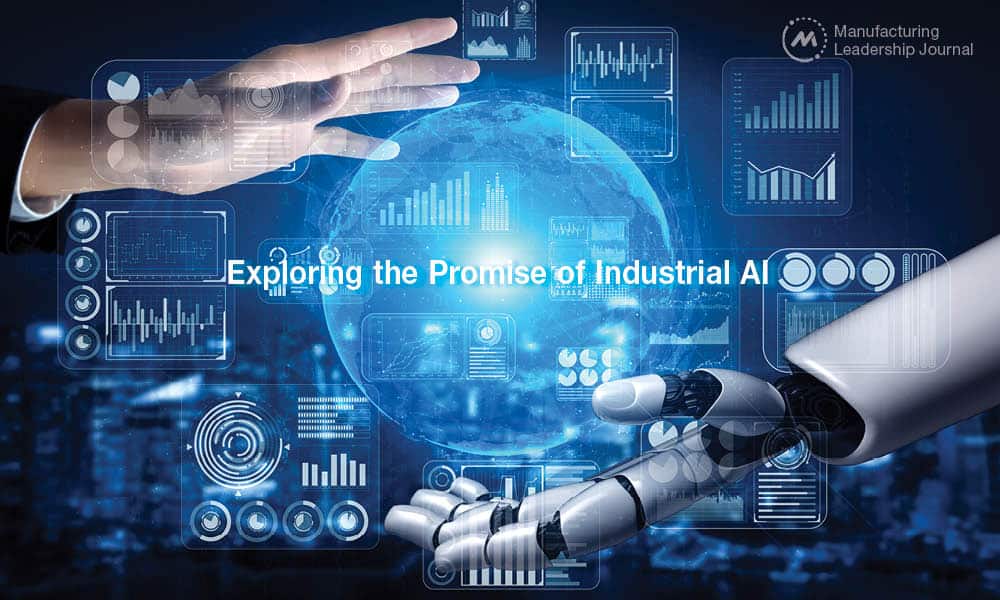
AI promises to foster a mutually augmented human-machine relationship, making the workforce more productive and strengthening manufacturing capability.

Artificial intelligence is already becoming a commodity tool that is permeating our lives. If you have used Google maps, Apple maps, or shopped on Amazon, then you have already been touched by AI.
Driven by Data
AI is essentially the simulation of human intelligence using computers. Machine learning (ML) is a subset of AI that is used to automatically learn from data without being explicitly programmed. The two key words here are simulation and data. While we’ve all heard about the great promise of AI, it is still a simulation of human intelligence. Right now, human intelligence is superior to artificial intelligence in many sectors, and certainly in manufacturing. Part of the reasoning here, is that AI has yet to be trained in the vast field of manufacturing. Such training requires data. One thing that we do know from manufacturing is that we have significant levels of automation, and that automation has serious amounts of sensors and sensing capabilities on board. So, while there is still much to be learned about AI in manufacturing, we do have substantial amounts of data for that training.
Understanding the Opportunity
Many initial forays in using AI in manufacturing have been tried. One approach is to take all of the data coming from manufacturing operations and feed them into commercially available AI algorithms to find patterns linking various elements of the manufacturing process to the outcomes (e.g., quality, process health, and the tuning of operations). Many of these attempts are what one would call “black box”, in that they are basically just throwing the data at AI systems to see what happens. This approach has had some limited success. However, more successful approaches have used data with models that are well established but augmented by AI. Augmented is the key word here. An AI augmented model approach uses models based on what we know about our manufacturing processes and supply chains and augments those models to yield more accurate and refined results.
For example, new generation design (CAD) tools employ AI to help design components based on variables such as the load requirements on a part, while minimizing its weight. The approach is generally called generative design, and it creates some very complex structures. One might think that such complex parts can easily be 3D printed – just hit the print button! – as we can now 3D print almost any geometry. However, a person with significant experience in 3D printing will tell you that this kind of print button does not exist and there remain numerous limitations on 3D printed parts. A part generated by an AI design alone may not, in fact, be printable. However, an expert who understands both the goal and the limitations can work with the AI system to generate a lightweight part that can effectively support the required load while still being printable. This is where artificial intelligence works together with real intelligence. The AI is augmenting the human designer, and the human designer is augmenting the AI in this instance. The key is that both are working together.
Improving the Models
Today, we are just starting to take our data and augment our models to help us better understand our processes. Within a few years, we will have improved models that better utilize sensor data to help us predict the future health of our processes. For example, higher end machine tool manufacturers are starting to place more sensors, such as accelerometers, on their spindles. They train their AI algorithms to understand the sensor output when the spindle is healthy, and then have the algorithms use that knowledge to determine if the spindle has developed a problem. Furthermore, the algorithms can often determine a pending problem, and when it is going to happen. So now, a plant might shut a machine down for maintenance in advance of a breakdown. Thus, repair might happen during the weekend, when the machine is scheduled for maintenance, as opposed to waiting for it to break at an inopportune time such as in the middle of a shift.

“AI has yet to be trained in the vast field of manufacturing. Such training requires data. While there is still much to be learned about AI in manufacturing, we do have substantial amounts of data for that training.”
Such applications of AI will not be a silver bullet. The interpolation/extrapolation limitations of AI will still be in place. That is to say, there is a good chance that AI will not do well outside the scenarios that generated its original training data. So, if a completely new problem or situation is presented to AI, its response can be highly unpredictable. Therefore, we will have to understand its limits. For example, there is no algorithm that can accurately predict when a spindle will fail, until the spindle starts to fail. Statistics can be used to estimate failure (for example, based on experience the spindle may be expected to last so many hours of operation), but until the actual failure starts to occur, one cannot use AI, or any other techniques, to precisely predict that failure. For example, statistically speaking, the spindle might be expected to last for 10,000 hours of operation. However, if a severe crash occurs, that life expectancy might be substantially shortened. That being said, if crash data are fed into AI models, we might get a better feel for how much time was taken off the spindle life due to the severity of the crash, so there is another instance where we can augment our spindle life model.
Augmenting the Human Workforce
Just as with automation, people often express concerns about AI replacing humans in manufacturing jobs. Certainly, we will not see the Skynet AI scenario from the Terminator movie series that is in total control. What we will see is that the AI will augment the human workforce making it more valuable and effective. So once again, rather than artificial intelligence, we will see augmented intelligence. Just as with the earlier generative design example, we can use AI to help the human workforce, and the human workforce can be used to train AI.
Mixed Reality AI
One great technology advancement that is presently coming on-line and will be fully integrated into manufacturing operations by 2030, is mixed reality, which is a blending of the digital and physical worlds. For example, in a plant many workers may have to wear safety glasses, so why not make them augmented reality (AR) goggles? Such goggles could ensure that an operator follows the right procedures and adheres to all the required safety protocols. It could also ensure the correct insertion of all of parts into an assembly. Such an approach is the best of both the human and automation worlds.
Automated assembly makes sense in a highly controlled environment when thousands or tens of thousands of assemblies are being made and the components of the assembly are always in the same location and orientation so that automated units such as robots know exactly where and how to put up these parts. But if a part is backwards or falls over for some reason, the robot may have great difficulty picking it up. A human, however, is very adept at determining a part’s location and orientation and picking it up to put into an assembly correctly. Furthermore, AR goggles could ensure that the person picks up the right components and puts them into the right locations. An added benefit to this, is that a digital passport can then be generated for the assembly that records the correct assembly procedure documenting every process step ensuring the assembly’s quality.
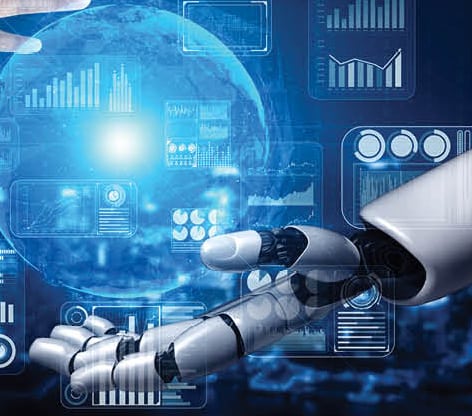
“Augmented is the key word here. An AI augmented model approach uses models based on what we know about our manufacturing processes and supply chains and augments those models to yield more accurate and refined results.”
Such a capability can also be used to help to train new workers in a facility and reduce their errors substantially, especially if the AR is used to train the AI by learning directly from the actions and decisions of experienced workers. This does not eliminate the human from the job, as a human is still necessary to physically execute the task. But AI could learn the most effective manner to execute a task and then guide a novice through a similar procedure using AR. All this can be done while building the product’s digital passport, conducting time and motion studies, and ensuring that all safety protocols are followed. It is truly an approach that augments and adds value to the workforce.
Privacy Implications
If we are recording every move and motion of the workforce, this does raise some privacy concerns which will need to be addressed in the years ahead. We will need to understand what we are learning and recording from the workforce and ensure that their data are protected accordingly. This is not unlike Google maps. We share our location with Google, and in turn, Google provides us with directions to where we want to go. Of course one major concern here is that Google might use our location data to track us and provide that information to third parties. The same is true in manufacturing. How do we ensure privacy among workers and businesses? This does open up a can of worms as, right now, different geographic regions (e.g., EU, U.S., China) have different regulations regarding personal data and its privacy. So, we will certainly have to address these issues which could become increasingly complex for multinational companies over the next few years.
Furthermore, the ability to share production data from one production facility to other facilities, or from one machine tool to another, is going to become important as lessons learned in one location could be equally as valuable to others at different locations. This highlights the value of data, but it begs the question, why would factory owners open their cyber doors to others and share their data? Clearly, new business and privacy models and rules must be developed to make it both worthwhile and safe for companies, and industries, to share some of their data.
Looking Ahead
So, I believe that by 2030 we are going to see AI capabilities permeate throughout manufacturing. We are also going to see it really take off in mixed reality settings that will increasingly look like something out of a science fiction movie. This will result in a safer, more efficient, and higher value-added manufacturing ecosystem. But it will also result in some very different business and socio-economic models that will change the way manufactures operate, think, and profit in the years ahead. M

About the author:
Professor Thomas R. Kurfess is Executive Director at the Georgia Tech Manufacturing Institute, Professor and HUSCO/Ramirez Distinguished Chair in Fluid Power and Motion Control at the George W. Woodruff School of Mechanical Engineering at the Georgia Institute of Technology, and a member of the MLC’s Board of Governors.
Case Study: Transforming through Manufacturing 4.0

How technology, analytics, and training improved IPG’s business performance.

Company Fact File
Company: Intertape Polymer Group
Sector: Packaging and protective solutions
HQ Location: Sarasota, Fla.
Revenues: $1.5B
URL: itape.com

As a packaging and protective solutions company, Intertape Polymer Group (IPG) has a proven track record of ensuring things are secure and wrapped up nicely. But in 2019, the company looked inward at its processes and people and started a journey to ensure that its operations and technologies would be in a successful Manufacturing 4.0 package.
 To get there, IPG undertook a digital transformation journey aimed at empowering all employees with technology, analytic insights, and training to make a meaningful impact on business performance. The journey included a multi-faceted approach to implement various M4.0 technologies across IPG’s business operations with a focus on delivering bottom line savings and scaling the technology deployment.
To get there, IPG undertook a digital transformation journey aimed at empowering all employees with technology, analytic insights, and training to make a meaningful impact on business performance. The journey included a multi-faceted approach to implement various M4.0 technologies across IPG’s business operations with a focus on delivering bottom line savings and scaling the technology deployment.
“Lean permeates IPG’s culture. It’s part of who we are and how we do things,” said Jai Sundararaman, IPG’s Vice President of Business Transformation. “It’s now getting more and more integrated with these different technologies.”
IPG started the journey with five key focus areas:
- Digital Analytical Platform. Harnessing IPG’s equipment performance analytics to improve operational efficiency.
- Augmented Reality (AR). Training and developing employees and attracting new talent.
- 3D Printing. Reducing spare parts cost and supply constraints.
- Machine Health. Monitoring key assets 24/7 to reduce downtime and extend asset life.
- Cloud Based Maintenance Management System. Centralizing asset information and reducing operating costs through proactive maintenance and spare parts inventory reduction.
These initiatives were piloted in IPG’s manufacturing environments so the company could understand the real impact, resources needed, and savings realized. As the journey progressed, the company continued to implement these technologies across the organization in subsequent phases.
The digital transformation journey
IPG began its M4.0 and digital transformation journey by creating a roadmap, vetting and piloting technologies, and working with different vendors to identify partnerships that would provide a scalable business solution.
“It takes hard work, discipline, a problem-solving mindset, and resilience for an extended period before you crack the code,” noted Sundararaman.
But as IPG progressed, the pilot projects enabled the company to identify impactful technologies and the capital and resources needed to implement them. Project leads worked with cross functional teams to apply each facet of the deployment strategy, and IPG continues to implement these projects across the organization based on their potential impact on processes and bottom-line savings.
The business impact of contextualized data and M4.0 technology
As IPG forged ahead, it found particular value in understanding data. By analyzing data in real time, the digital analytical platform opened the door to take a deeper look at process parameters to understand its impact on yield and quality. Ongoing yield and quality improvements put IPG in a competitive position to continue to deliver value to customers through lower cost and higher quality. The digital analytics platform was piloted in five plants, and as the project continues to scale, there is potential to save millions in the next five years across 15 plants.
Along the way, the company’s A3 problem solving methodology became twice as productive by increasing the availability of accurate, real-time, contextualized data.
“IPG realized a 75% cost savings while reducing lead time for machine parts from three weeks and three months to less than a few hours in most instances.”
“A3 is a classic example of how we strategically look at the opportunities to go about problem solving,” Sundararaman said. “Now you leverage digital mindsets, toolsets, and skillsets to go make it happen.”
These improvements led to a new process control ideology called centerlining – the process of categorizing each product run by uptime and quality metrics, then using analytical tools and custom applications to determine optimal set points and identify failure correlations. Process hack-a-thons using the centerlining framework became the process engineering focus in order to improve uptime, reduce waste, and improve product quality and consistency. Required process accommodations for uncontrolled process variables, such as outside weather conditions and ambient plant temperature, were analyzed to maintain optimal process conditions.
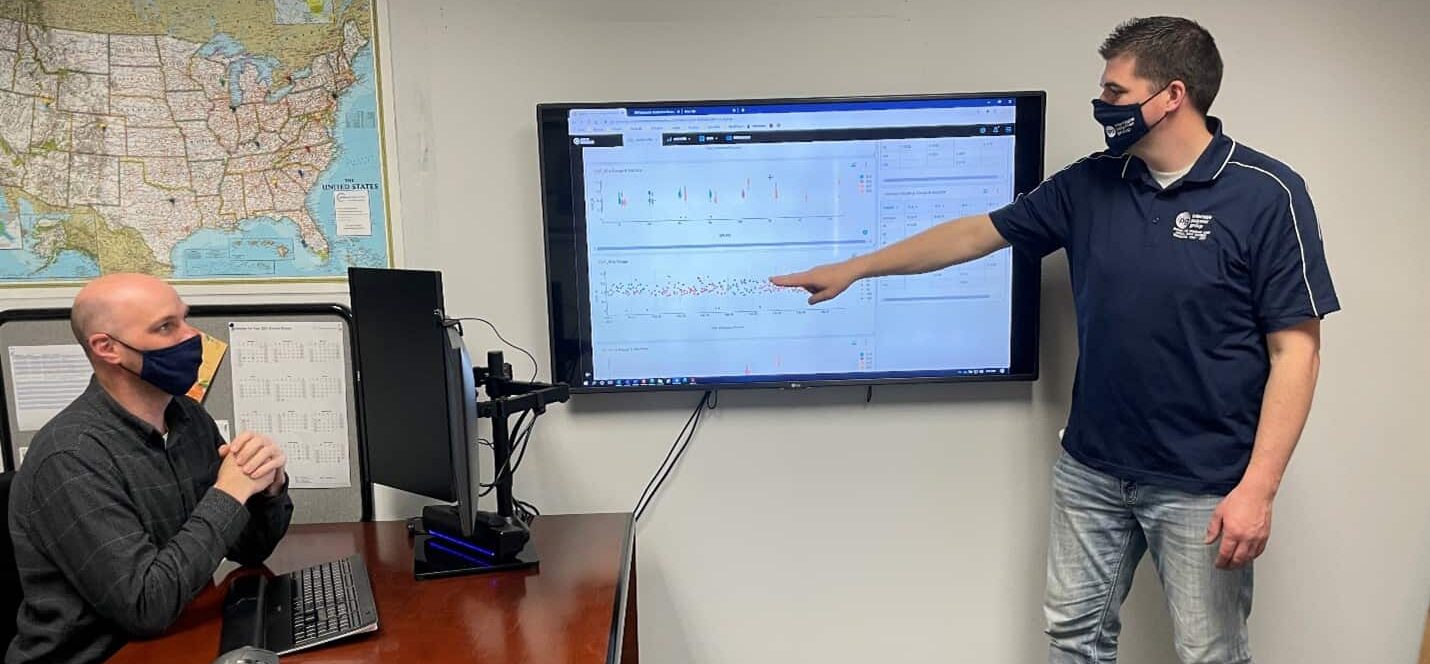
“A hack-a-thon is a mini-Kaizen,” Sundararaman said. “It’s a different way of going about it. Two to four hours of sitting with all the data and the right people brings up all kinds of insights that never existed before – correlations and possibilities that were not commonly looked at in the past and how we went about solving problems. Now it’s at your fingertips.”
Meanwhile, Machine Health IOT sensors and the AI algorithms have been used to predict machine failures by monitoring the vibration, temperatures, and key variables of the machine, resulting in significant reduction of downtime. In one plant alone, IOT sensors showed promise in the first four months, as reduced downtime translated to real savings.
The company also implemented 3D printing in more than 13 sites, printed more than 1,000 parts. Along the way, IPG realized a 75% cost savings while reducing lead time for machine parts from three weeks and three months to less than a few hours in most instances.
“It takes hard work, discipline, a problem-solving mindset, and resilience for an extended period before you crack the code.”
Tying maintenance together, IPG’s cloud-based maintenance management system was deployed at five sites to track more than 50 thousand SKUs. The goal of this system is to reduce inventories across the plants with consistent and centralized reporting as IPG scales up across all plants.
Lastly, IPG used AR technology to reduce the onboarding time for new employee training. At the two pilot sites, IPG improved labor efficiencies by 12%. As the project is scaled across sites, IPG expects to improve safety process and reduce training costs while improving yield and quality. The AR technology allowed the company to engage employees in new ways. Continuing to scale up will help develop the workforce of future.
Driving operational excellence across the board
One way for IPG to achieve its operational excellence goal is to exceed customers’ expectations by providing superior products at a lower cost and a higher quality. Further, any waste reduction in IPG’s operations directly impact its commitment to reducing its environmental footprint. The M4.0 technologies that IPG is implementing have helped the company gain a deeper understanding of its processes and equipment to solve complex problems and achieve savings beyond its normal continuous improvement capabilities.
As IPG scales technologies across its operations, it will continue to learn and realize additional savings moving from local optimization initiatives to a globally harmonized enterprise solution. Early data from the company’s asset health monitoring and maintenance management system has shown tangible dividends by reducing spare parts cost and improving uptime by proactively predicting equipment failures.
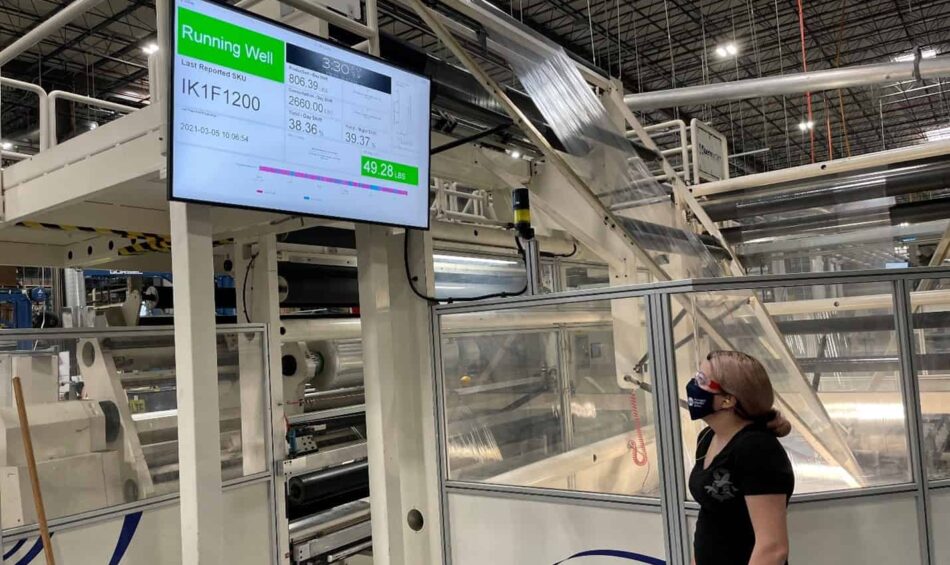
All these M4.0 technologies have provided significant impact on IPG’s operations. As the company continues to scale up across its more than 30 global operations, it presents an enormous opportunity to create additional value to the business and to our customers.
Beyond what’s been accomplished so far, Sundararaman sees a continued focus on digital and IPG will continue to seize the opportunity as it scales.
“This has now taken root and we’re moving into other functional areas,” he said. “In supply chain we’re going to start rolling out digital tools and capabilities. On the commercial side we’re looking at analytics and capabilities. So it’s spreading across the enterprise.”
Stocking the trophy case
As if improved competitiveness, quality, and workforce engagement and reduced costs, environmental impact, and downtime were not enough, IPG’s efforts have earned significant external praise. For its overall effort, IPG was recognized with a 2022 Manufacturing Leadership Award for Enterprise Integration and Technology. Sundararaman was honored in 2021 by MLC with the Digital Transformation Leadership Award. That same year, the company’s Tremonton, Utah operations – where the digital analytical platform was piloted – won the MLC Engineering and Production Technology Leadership Award and was chosen by Industry Week for the Industry Week Best Plant Award for its outstanding achievement for showcasing improvements made with M4.0 technologies.
These accolades add a nice bow to the M4.0 package IPG continues to create. M
About the author:

Jeff Puma is Content Director for the Manufacturing Leadership Council
Kickstart Smart Factories with Modernized ERPs
Manufacturing Leadership Journal content and MLC resources are exclusively available to MLC members. Please sign up for an account or log in to view this content.
